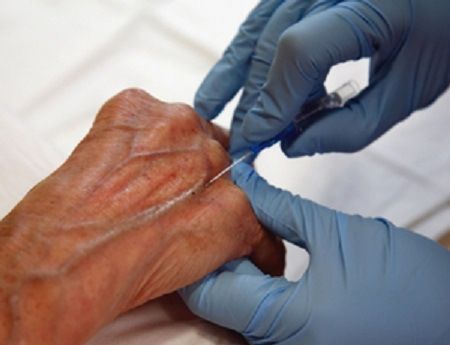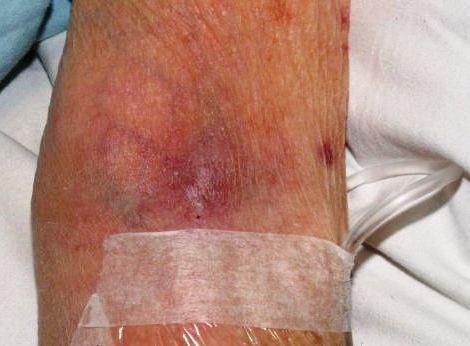Aging changes not just the way a person’s skin looks but also its depth, texture, and integrity (1). Growing old also makes people’s veins more fragile and that can make the insertion of I.V devices a lot trickier and harder.
However, even though older people have very fragile veins, it doesn’t mean that IV insertion should always be difficult. With the right tips and strategies, you should be able to do the task with ease.
Below are some of the most important tips you need to know:
Avoid applying too much friction when preparing the skin.
Remember, older adults have more fragile skin and too much friction may damage surface tissues, therefore putting them at risk for bacterial infection.
See Also: How to Perform IV Insertion on Very Fragile Veins: 5 Essential Tips For Nurses
Use the smallest catheter workable.
Although the size of the catheter usually depends on what treatment the patient needs, nurses should consider the patient’s delicateness.
Older adults experience changes in their skin’s tone and elasticity and they are more prone to bruising. Due to the loss of subcutaneous tissue, their veins are also less stable and are at high risk of developing vein tears.
According to Infusion Nurses Society standards, smaller-gauge needles are great for older patients who are in need of antibiotic administration or hydrating solutions by an infusion pump.
Know the vein’s depth.
This is to determine how far you will be inserting the needle and what angle you can use in inserting. Most older adults have very shallow veins and require an almost flat insertion angle (approximately 10 to 20 degrees).
If possible, do not use a tourniquet.
Their veins are usually already visible and palpable even without a tourniquet. Tourniquet increases pressure which only increases the risk of tears. Instead, you can just lower the patient’s arm or apply warm compress prior to insertion.
When a tourniquet is needed, only use those that are made of soft materials.
Apply it gently as putting it too tight can cause venous “blows” and hematoma.
Stabilize the vein.
Apply traction to the side of the insertion site with your non-dominant hand. That way, there wouldn’t be unnecessary movements during insertion.
See Also: 35 IV Therapy Tips & Tricks for Nurses
After stabilizing, insert the catheter ON TOP of the vein.
Establishing side access may only push the vein away from the needle.
Insert the catheter “slowly but steadily”.

Avoid rushing and that applies to insertion of any I.V. device to patients of all ages. Using the bevel-up approach (2), insert the needle slowly on top of the vein while making sure that the vein is still stabilized.
Try to keep it in a 20- to 30-degree angle or almost flat with the skin. After penetrating the vein with one short stroke, advance the needle and the cannula slowly.
Use hypoallergenic tape.
The skin of older adults has lost its normal tone and elasticity. You have to make sure that you secure the catheter with enough hypoallergenic tape or dressing.
Apply pressure.
After you have removed the needle, you may need to apply pressure long enough until the bleeding stops. You should consider that older adults tend to have prolonged bleeding times. This is because, in older adults, clot formation may take longer to occur, even if they’re not using any anticoagulant.
In case bruising occurs, apply a cold compress for 24 hours.
You can then apply warm compresses to further promote hemostasis.
Immobilize the catheter properly.
This is another way of lowering the risk of skin tearing. Also, veins must be stabilized well, as older patients tend to roll upon their insertion sites. This may cause bleeding and, worse, infiltration.
Assess the patient regularly for signs and symptoms of infection, fluid overload, and infiltration.

Take note that older adults who are infected tend to show more subtle signs and symptoms, including lethargy, decreased appetite, change in mental status, tachycardia or bradycardia, and a subnormal temperature.
It may be a challenge to some, but as long as you know the proper way to do it, there wouldn’t be a problem. Hopefully, you would keep all these strategies in inserting an IV device in older adults in mind.
If you are still having a hard time finding good veins in your geriatric patients, here’s a video you might find useful:
Do you have other tips like these? Share them with us! We would love to hear from you!
References:
- Bonifant, H., & Holloway, S. (2019). A review of the effects of ageing on skin integrity and wound healing. British journal of community nursing, 24(Sup3), S28-S33.
- Solomowitz, B. H. (1993). Intravenous cannulation: a different approach. Anesthesia progress, 40(1), 20.




















